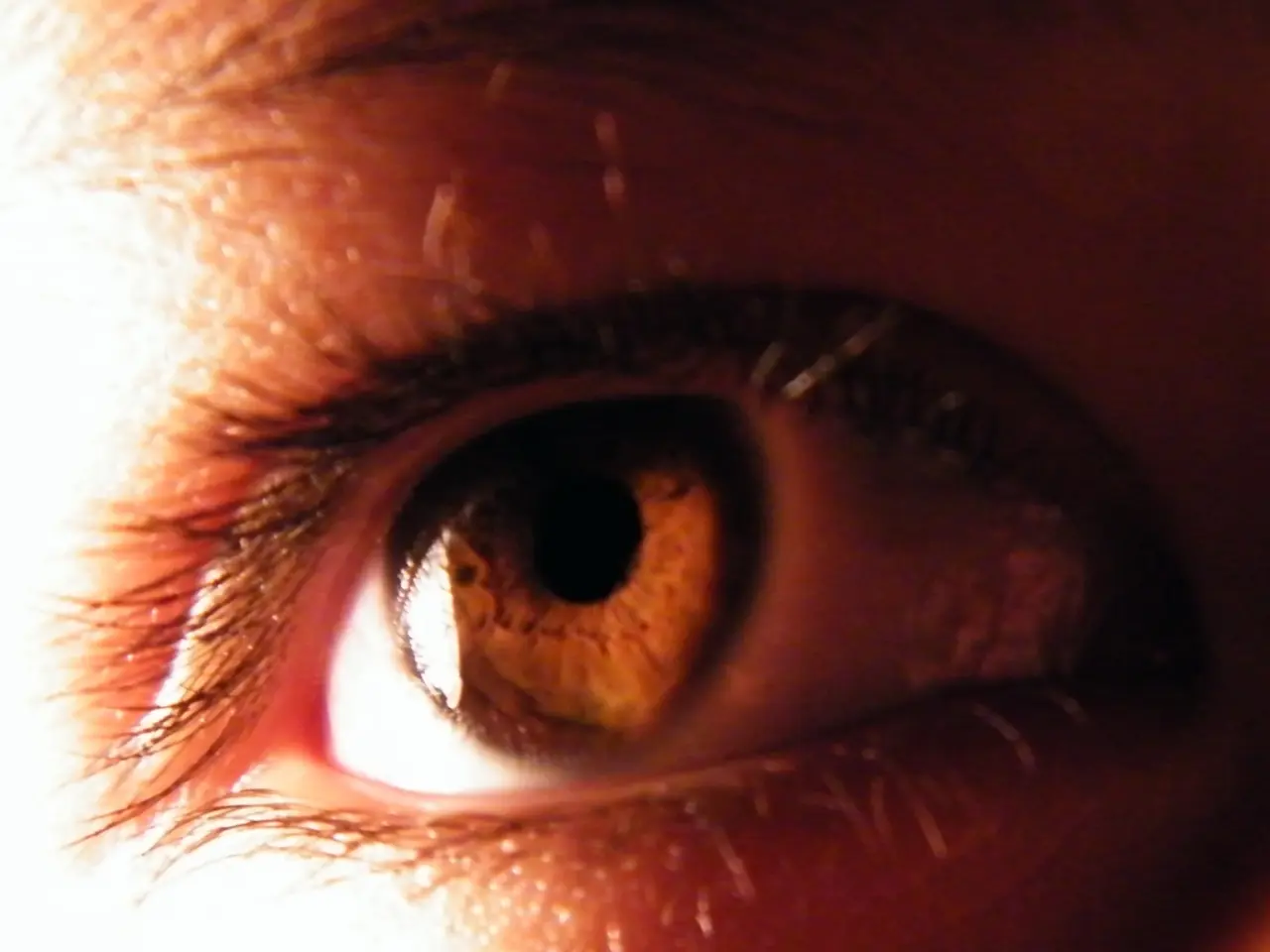Dry eyes potentially leading to headaches: Understanding origins and remedies
Dry eyes can often lead to a series of discomforts, one of which is headaches. This connection is due to the stimulation of the trigeminal nerve, a major facial nerve involved in sensation, which increases pain signals and contributes to headache development.
The dryness in the eyes leads to eye discomfort and inflammation that overstimulates the trigeminal nerve, causing both eye pain and referral headaches.
Shared Triggers for Dry Eyes and Headaches
Several factors can trigger both dry eyes and headaches. Prolonged screen time or digital device use, for instance, leads to reduced blinking and eye strain, causing dryness and headache due to muscle fatigue and irritation.
Air-conditioned or dry environments, which reduce moisture in the eyes, can cause dryness and irritation that can lead to headaches. Refractive errors or incorrect vision correction can also cause eye strain, manifesting as headaches and dry eye symptoms.
Hormonal fluctuations, especially around menopause, affect neurotransmitters related to pain sensitivity and inflammation, increasing susceptibility to headaches and potentially impacting eye surface health indirectly.
Lifestyle factors that contribute to headaches, such as dehydration (e.g., from alcohol consumption), caffeine withdrawal, or poor sleep patterns leading to morning headaches, can indirectly worsen eye discomfort.
Managing Dry Eyes and Headaches
To manage dry eyes and headaches, it's essential to identify and address the underlying causes. Treating the trigger that causes both conditions may help alleviate both complaints.
For occasional headaches, a person may wish to try taking an over-the-counter pain reliever, drinking plenty of water, stretching to relieve tension headaches, or seeking alternative treatments like massage, chiropractic, or acupuncture for severe or chronic headaches.
Keeping a journal of one's triggers and removing or avoiding those triggers can potentially prevent headaches and dry eyes. This might involve minimizing contact with allergens, using a humidifier during sleep, and taking frequent breaks from screen time.
Treatment for Dry Eyes
Certain treatments for dry eyes can also help alleviate headaches. For instance, certain types of contact lenses can help the eyes retain more moisture in the case of dry eyes. Plugging the tear ducts can help tears stay in the eyes for longer as a treatment for dry eyes.
Prescription drops such as Restasis or Cequa may provide relief for some people with dry eyes. Warm compresses and lid scrubs can ease eye irritation from some eye health conditions such as blepharitis.
In some cases, more invasive treatments like steroid treatments, surgical treatments, thermal pulsation, or intense pulsed light may be necessary for severe dry eyes. However, these treatments should be discussed with a healthcare professional.
Preventing Dry Eyes
Preventing dry eyes can help reduce the risk of associated headaches. To prevent dry eyes, a person can try taking frequent breaks when working, using a humidifier, asking a doctor about a fatty acid supplement, drinking plenty of water, minimizing time spent in very dry environments, and not allowing air to blow into the eyes.
It's important to note that while dry eyes can cause headaches, there is no evidence that one causes the other. However, managing both conditions can lead to a more comfortable and pain-free life.
[1] Dry Eye Disease and Headache: A Systematic Review and Meta-Analysis. Neurology. 2020;94(1):e10.
[2] Dry Eye and Headache: A Case Report. Headache. 2015;55(3):490-493.
[3] Dry Eye and Migraine: A Case-Control Study. Ophthalmology. 2017;124(11):1768-1774.
[4] Dry Eye and Migraine: A Population-Based Study. Ophthalmology. 2017;124(11):1775-1780.
[5] Hormonal Factors in Dry Eye Disease. Current Opinion in Ophthalmology. 2018;30(5):327-332.
- The trigeminal nerve, stimulated by the dryness in the eyes, can cause both eye pain and referral headaches.
- Prolonged screen time, reduced blinking, and eye strain can lead to dry eyes and headaches due to muscle fatigue and irritation.
- Air-conditioned or dry environments, which reduce moisture in the eyes, can cause dryness and irritation that can lead to headaches.
- Refractive errors or incorrect vision correction can cause eye strain, contributing to symptoms of headaches and dry eye.
- Hormonal fluctuations, especially around menopause, can increase susceptibility to headaches and potentially impact eye surface health indirectly.
- Addressing the underlying causes of dry eyes and headaches may help alleviate both conditions.
- To manage dry eyes and headaches, a person can take over-the-counter pain relievers, drink plenty of water, minimize contact with allergens, use a humidifier, and take frequent breaks from screen time.
- Preventing dry eyes, through measures like taking frequent breaks when working, using a humidifier, and staying hydrated, can help reduce the risk of associated headaches.




